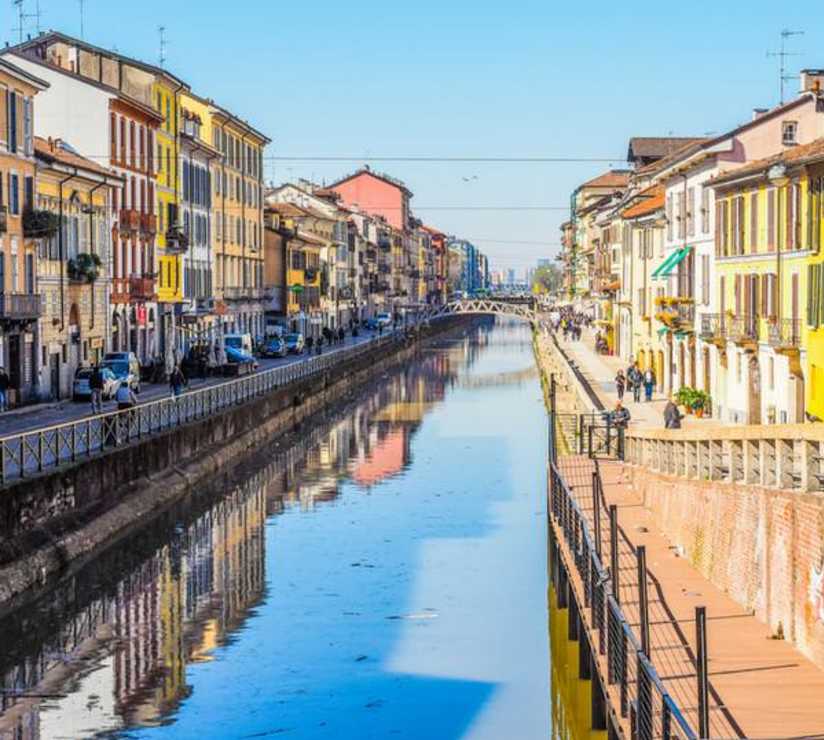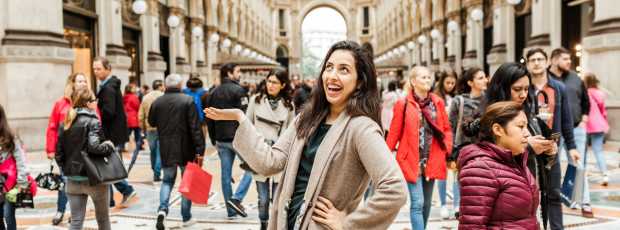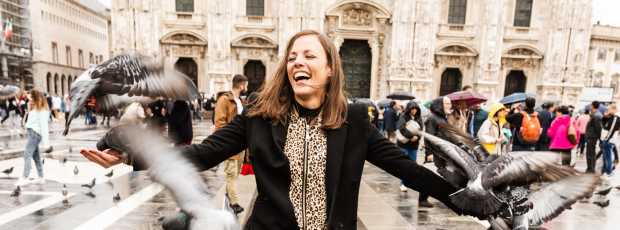Table Of Contents
- Why Safety in Mexico City Isn't a Yes/No Question
- Understanding Safety Context in Latin America's Largest Capital
- What's Actually Dangerous in Mexico City and What's Just Hype
- Is It Safe to Walk Around Mexico City at Night?
- Public Transportation: Metro System and Beyond
- Neighborhood by Neighborhood: Where I Feel Safe and Where I Don't
- Food Safety and Water: What Actually Matters
- Air Quality and Environmental Considerations
- How I Keep My Guests Safe—Practical Advice
- Specific Safety Questions Answered
- Comparing Mexico City to Other Destinations
- Cultural Context and Local Insights
- What to Do if Something Goes Wrong
- The Economics of Safety
- Seasonal and Timing Considerations
- Technology and Safety Tools
- Final Assessment: Is Mexico City Worth the Risk?
Why Safety in Mexico City Isn't a Yes/No Question
After 14 years living in Mexico City, I've hosted dozens of first-time visitors. The question always comes up before they arrive: "Is Mexico City safe?"
My answer? It depends on what you mean by "safe," where you're going, and how you carry yourself. Mexico City isn't Disneyland, but it's not Mad Max either.
When friends ask me if they should visit Mexico City, I tell them the same thing I'm telling you now. This is a large city of 9 million people in the urban core, 22 million in the greater metropolitan area. Like any large city, it has its rhythms, its safe zones, and its trouble spots.
The real question isn't whether Mexico City is safe, it's whether you understand how to navigate a big city intelligently. Because that's what this comes down to: street smarts, common sense, and knowing where you are.
Understanding Safety Context in Latin America's Largest Capital
Mexico City in Regional Perspective
To understand safety in Mexico City, you need context. This is the capital city of Mexico, one of the largest urban areas in Latin America. Compared to other large cities in the region, São Paulo, Bogotá, Lima, Mexico City actually fares pretty well on most safety metrics.
The city has invested heavily in public transportation, police presence, and urban infrastructure over the past two decades. You'll see more security cameras, more transit police, and better lighting than you might expect.
Crime Statistics vs. Lived Reality
Here's what the numbers don't tell you: violent crimes in Mexico City are largely concentrated in specific areas and demographics. Most incidents involving tourists fall into the petty crime category, pickpocketing, bag snatching, credit card fraud.
As a large city, Mexico City deals with the same urban challenges as New York, London, or Tokyo. The difference is perception. Mexico City dangerous? In certain neighborhoods, at certain times, absolutely. But the same could be said for any big city.
The key is understanding that this whole city of 22 million people can't be painted with one brush. Centro Histórico at 2 PM on a Tuesday is different from Centro at 2 AM on a Saturday.
What's Actually Dangerous in Mexico City and What's Just Hype
Media Myths vs. Street Reality
Let me be clear about something: the Mexico City you see in news reports isn't the Mexico City I live in. Yes, this is still Mexico, and yes, there are areas where I exercise increased caution. But the apocalyptic coverage doesn't match my personal experience or that of the millions of people who live here safely.
The biggest actual risks for visitors? Petty theft, overcharging, and getting lost in areas where you shouldn't be after dark. Not exactly the stuff of action movies.
Where I Actually Worry
There are parts of Mexico City where I wouldn't go alone at night, and I definitely wouldn't recommend them to first-time visitors. Some peripheral neighborhoods, certain sections of the historic city center after midnight, and areas with limited police presence.
But here's the thing: you're probably not accidentally wandering into these areas. Tourist attractions, major hotels, and popular restaurants aren't located in Mexico City's most problematic neighborhoods.
The places where most American tourists and other visitors spend their time, Condesa, Roma, Polanco, parts of Centro during the day, these areas have the same safety profile as nice neighborhoods in most cities.
Looking for a private city experience in Milan?
Explore the city with a local who plans a private day just for you; no groups, no scripts.
Is It Safe to Walk Around Mexico City at Night?
My Personal Night Walking Rules
This is where context matters most. Is it safe to walk around Mexico City at night? In well-lit, crowded areas with decent foot traffic? Generally, yes. In empty residential areas or sketchy commercial zones? I wouldn't recommend it.
I walk around my neighborhood in Roma Norte at night regularly. I'll walk from a restaurant in Condesa to catch a taxi on a main avenue at 11 PM without thinking twice. But I'm not taking midnight strolls through unfamiliar territory.
The Female Traveler Factor
Solo female travelers often ask me about safety specifically. My female friends who live here navigate the city confidently, but they're also savvy about timing, locations, and transportation choices.
The same basic safety precautions that apply to women in other major cities apply here: stay aware of your surroundings, trust your instincts, and don't put yourself in isolated situations unnecessarily.
Mexican culture is generally respectful toward visitors, but like anywhere, there are individuals who might see an obviously foreign woman as a target of opportunity.
Public Transportation: Metro System and Beyond
Is Mexico City Metro Safe?
The Mexico City metro system carries 4.5 million passengers daily. It's generally safe, efficient, and remarkably affordable. During daytime travel, I recommend it without hesitation.
The system includes female only dorms during peak hours, cars designated specifically for women and children. This isn't because the metro is inherently dangerous, but because crowded conditions can create opportunities for harassment.
Night Travel Considerations
Is Mexico City metro safe at night? I use it regularly until about 10 PM without concerns. After that, I'm more likely to take a taxi or rideshare, partly for convenience and partly because late-night metro crowds can be less predictable.
The metro runs until midnight on weekdays, 1 AM on Saturdays, with reduced service on Sundays. Public transportation in Mexico City also includes the Metrobús system, which I find perfectly safe during normal operating hours.
For American tourists and other visitors, the metro represents excellent value and efficient transportation. Just apply the same awareness you'd use in any large city's subway system.
Neighborhood by Neighborhood: Where I Feel Safe and Where I Don't
The Safest Neighborhoods for Visitors
Let's talk about where most tourists actually stay and spend time. Roma Norte and Roma Sur have transformed into Mexico City's hipster heartland, coffee shops, boutique hotels, young professionals, and a visible police presence.
Condesa offers tree-lined streets, Art Deco architecture, and a generally relaxed atmosphere. I've never felt unsafe walking around Condesa during reasonable hours.
Polanco is Mexico City's upscale zone, think luxury shopping, high-end restaurants, and business hotels. If you're staying in Polanco, safety is probably the least of your concerns.
Centro Histórico: Complicated but Manageable
Is Centro safe? During the day, absolutely. The historic city center bustles with activity, street vendors, and tourists. There's constant foot traffic and regular police patrols.
Centro at night requires more judgment. The main plazas and well-lit commercial streets remain active, but empty side streets can feel sketchy. I'm comfortable in Centro until about 10 PM, later if I'm in a group.
Areas I'd Skip
Certain peripheral neighborhoods simply aren't tourist destinations, and there's no reason to venture there. Tepito, parts of Doctores, some areas of Iztapalapa, these aren't inherently evil, but they're not places where visitors typically have business.
The good news? You're unlikely to end up in these areas accidentally. Mexico City's tourist infrastructure is concentrated in the central and western neighborhoods.
[IMAGE: Café in Roma with young professionals. Filename: roma-cafe.jpg]FR45
What if your day in Milan was planned by someone who knows it — and you?
City Unscripted matches you with a local host who creates a private experience based on your interests, not a set route.
Food Safety and Water: What Actually Matters
Street Food Reality Check
Is street food safe in Mexico City? This question comes up constantly. The honest answer: it depends on the vendor, the preparation, and your stomach's tolerance for new bacteria.
I eat street food regularly and rarely have issues. But I've also developed local immunity over 14 years. For first-time visitors, I recommend starting with established vendors who obviously have high turnover, fresh ingredients, busy stalls, proper food handling.
Street vendors in tourist areas generally maintain higher standards because they can't afford to poison their customers. Use common sense: if it looks sketchy, smells off, or isn't being kept at proper temperatures, skip it.
Many Mexico City tours include street food tastings with vetted vendors, which can be a safer way to experience the incredible variety without the guesswork.
The Water Situation
Should you drink tap water in Mexico City? I don't, and most locals don't either. This isn't necessarily about safety, it's about taste and mineral content. The tap water meets international standards, but it doesn't taste great.
Bottled water is cheap and available everywhere. Most hotels and restaurants provide filtered water. This is a non-issue unless you make it one.
Some visitors obsess over ice cubes and salad washing. In reputable restaurants, this is overthinking. In questionable establishments, you probably have bigger concerns than the water.
The street food scene is phenomenal here, and missing it entirely would be a shame, just be selective about your choices.
Air Quality and Environmental Considerations
Pollution Reality
Air pollution in Mexico City is real, especially during winter months when thermal inversions trap smog. Some visitors with respiratory sensitivities notice the difference immediately.
The city has made significant improvements over the past 20 years, but it's still a major urban area with millions of cars and industrial activity. Check air quality indexes if you have asthma or other breathing issues.
This isn't a safety threat in the traditional sense, but it affects quality of life and might influence how much time you spend outdoors.
Climate and Health
Mexico City sits at 7,350 feet above sea level. Some visitors experience altitude effects, headaches, fatigue, or difficulty sleeping for the first day or two.
Stay hydrated, take it easy the first day, and don't overdo the alcohol until you've acclimated. This is basic physiology, not a unique danger.
How I Keep My Guests Safe—Practical Advice
ATM and Money Basics
Use ATMs inside banks or shopping centers when possible. Avoid standalone machines on empty streets, especially at night. This is common sense anywhere, but it bears repeating.
I don't recommend money belts for Mexico City, they scream "tourist" and aren't necessary in most situations. Keep some cash separate from your main wallet, don't flash large bills unnecessarily, and use credit cards at established businesses.
Transportation Safety
Hail taxis from hotel stands or use ride-sharing apps. Uber and similar services work well in Mexico City and provide accountability that random street taxis don't.
For daytime travel, the metro and Metrobús are efficient and safe. For nighttime transportation, especially after a few drinks, stick with taxis or rideshares.
Staying Alert Without Paranoia
Stay alert, but don't be paranoid. Mexico City is a vibrant, complex place where millions of people live normal lives. If you're constantly looking over your shoulder, you're missing the point.
The same precautions you'd take in any large city apply here: be aware of your surroundings, trust your instincts, and don't make yourself an obvious target.
Tip
We match you with the right host, not just any guide.Want to experience the real Milan with someone who lives there?
A fully private experience, planned and led by a local host who tailors the day to you
Specific Safety Questions Answered
Is Mexico City Safe for American Tourists?
American tourists visit Mexico City regularly without incident. The city receives millions of international visitors annually. Most problems that do occur are minor, overcharging, petty theft, or getting lost.
The relationship between the US and Mexico creates some political complexity, but this rarely affects individual travelers. Most Mexico City residents are friendly toward American visitors.
What About Solo Travel?
Solo travelers, including solo female travelers, navigate Mexico City successfully all the time. The key is staying in established tourist areas, using common sense about timing and locations, and maintaining situational awareness.
I know solo travelers who've had amazing Mexico City experiences and others who felt uncomfortable. The difference usually comes down to preparation, attitude, and street smarts.
Emergency Situations
Mexico City has modern emergency services, though response times vary by neighborhood. Tourist police exist specifically to help visitors with problems or questions.
Most hotels can provide emergency assistance or translation services if needed. Having travel insurance isn't specific to Mexico City, but it's smart for any international travel.
Comparing Mexico City to Other Destinations
Safety Rankings and Context
Is Mexico City the safest city in Mexico? No, that distinction probably goes to places like San Miguel de Allende or certain beach resort towns with heavy tourist infrastructure.
But Mexico City isn't trying to be the safest, it's trying to be a world-class capital city. And in that context, it performs better than many people expect.
Compared to other major cities in Mexico, CDMX has better infrastructure, more police presence, and more resources devoted to public safety. It's not perfect, but it's not the lawless wasteland some people imagine.
International Comparisons
How does Mexico City stack up against other major cities globally? Better than some, worse than others. More challenging than Tokyo or Zurich, easier than São Paulo or Johannesburg.
The crime rates for visitors to Mexico City are comparable to many American cities. Most visitors who take basic safety precautions have trouble-free experiences.
Cultural Context and Local Insights
Understanding Mexican Hospitality
Mexican culture emphasizes hospitality toward visitors. Most locals will go out of their way to help lost tourists or provide directions. This isn't universal, but it's common enough to notice.
Family members often visit Mexico City from other parts of Mexico and navigate the city successfully. It's not a alien environment—it's a functioning capital city with normal social dynamics.
Language and Communication
Speaking Spanish helps, but it's not essential for basic safety. Many people in tourist areas speak some English, and Mexico City is accustomed to international visitors.
Learning basic Spanish phrases for emergencies, directions, and polite interactions improves your experience and safety margin.
Local Customs and Respect
Understanding local customs prevents misunderstandings that could create problems. Dress codes aren't strict, but being obviously foreign and inappropriately dressed can make you a target.
Respect for local culture goes beyond safety, it's about being a good visitor. But it also helps you blend in and avoid unwanted attention.
Ready to plan your perfect day in Milan?
Start your experienceWhat to Do if Something Goes Wrong
Minor Problems
Most issues visitors encounter are minor: overcharging, getting lost, or small scams. These are annoying but not dangerous.
Know your hotel's address and phone number. Keep emergency contacts accessible. Have a backup plan for transportation if your first option falls through.
More Serious Situations
For serious problems, contact tourist police or your embassy. Mexico City has infrastructure to handle visitor emergencies, but response quality varies.
Having local contacts helps. This might be hotel staff, tour guides, or expat communities who can provide assistance or advice.
Travel insurance becomes important for medical emergencies or major theft. Mexico City has excellent private healthcare, but it's expensive for uninsured visitors.
Prevention vs. Reaction
Prevention beats reaction every time. Most safety problems in Mexico City are avoidable with basic awareness and common sense.
Don't put yourself in obviously risky situations, don't make yourself an easy target, and trust your instincts when something feels wrong.
The Economics of Safety
How Much Does Safety Cost?
Staying in safer neighborhoods costs more, but not dramatically more. The difference between a budget hotel in a sketchy area and mid-range accommodation in Roma or Condesa might be $20-30 per night.
Quality taxis and rideshares cost more than public transportation, but we're talking about a few extra dollars for significantly more convenience and security.
Eating at established restaurants versus street vendors or questionable establishments might double your food costs, but you're still talking about reasonable amounts.
Budget Travel and Safety
Mexico City can be visited safely on a budget, but it requires more planning and awareness. Budget travelers need to be smarter about timing, locations, and transportation choices.
Staying in hostels in good neighborhoods, using public transportation during daylight hours, and eating carefully chosen street food can keep costs down without dramatically increasing risk.
The key is being selective about where you save money versus where you invest in safety and convenience.
Seasonal and Timing Considerations
Best Times to Visit for Safety
Mexico City's safety profile doesn't change dramatically by season, but certain times are more convenient. Dry season (November through April) means better air quality and more predictable weather.
Holiday periods can bring crowds and increased police presence to tourist areas, which generally improves safety but can create transportation challenges.
Daily Timing Patterns
Daylight hours are always safer for exploration, especially in unfamiliar areas. Most tourist attractions and neighborhoods are perfectly safe during normal business hours.
Evening activities in well-established areas remain safe, but late-night exploration requires more judgment and preparation.
Special Events and Demonstrations
Mexico City occasionally experiences political demonstrations or special events that can affect transportation and crowd patterns. These are usually announced in advance and avoidable.
Most demonstrations are peaceful, but they can create traffic problems and confusion for visitors unfamiliar with the city layout.
Technology and Safety Tools
Apps and Digital Resources
Mexico City has excellent cell coverage and WiFi availability. Standard safety apps, maps, translation, ride-sharing, and emergency contacts, all work normally.
Local apps like Beat (ride-sharing) and specific restaurant or transportation apps can be helpful for navigating the city more efficiently.
Google Maps works well for navigation, but download offline maps as backup in case of connectivity issues.
Communication and Check-ins
Staying connected with family members or friends back home provides an extra safety layer. Regular check-ins aren't necessary, but they provide peace of mind.
Mexico City has modern communication infrastructure, so staying connected isn't challenging or expensive.
Digital Security
Use the same digital security practices you'd use anywhere: secure WiFi connections, password protection, and backup of important documents.
ATM skimming and credit card fraud exist but aren't more prevalent than in other major cities. Use normal precautions.
Final Assessment: Is Mexico City Worth the Risk?
Putting Risk in Perspective
After 14 years here, I can say with confidence that anyone wondering is Mexico City worth visiting will find a resounding yes. The city’s cultural richness, world-class food scene, striking architecture, and vibrant energy far outweigh the safety concerns for most thoughtful travelers.
Is Mexico City perfectly safe? No large city is. But it's manageable, navigable, and generally welcoming to visitors who use common sense.
The question isn't whether Mexico City is safe, it's whether you're prepared to travel intelligently in a major urban environment.
What I Tell First-Time Visitors
When friends ask me about visiting Mexico City, I tell them to come. But I also tell them to do their homework, stay aware, and respect the fact that they're visiting a complex, real city with real urban dynamics.
Mexico City safe? Safe enough, if you're smart about it. Mexico City dangerous? It can be, if you're careless about it. The city is what you make of it.
Most visitors have amazing experiences and leave planning their next trip. A few have problems, usually because they ignored basic urban travel principles.
The Bottom Line
Is Mexico City safe for tourists? Yes, with appropriate precautions. Is it safe to walk around Mexico City at night? In the right areas, at the right times, with the right awareness.
This is a city of 22 million people living their lives, working, raising families, and getting by. It's not a theme park, but it's not a war zone either.
Come with realistic expectations, prepare appropriately, and you'll likely discover what I discovered 14 years ago: Mexico City is one of the world's great urban experiences, worth understanding rather than fearing.
Whether you're seeking a Mexico City adventure through its neighborhoods, markets, and hidden corners, or prefer a more structured approach, the city rewards visitors who engage with it thoughtfully.
The same precautions that keep you safe in New York, London, or São Paulo will keep you safe in Mexico City. It's not more complicated than that, and it's definitely worth visiting.
What if your day in Milan was planned by someone who knows it — and you?
City Unscripted matches you with a local host who creates a private experience based on your interests, not a set route.
Want to experience the real Milan with someone who lives there?
A fully private experience, planned and led by a local host who tailors the day to you








